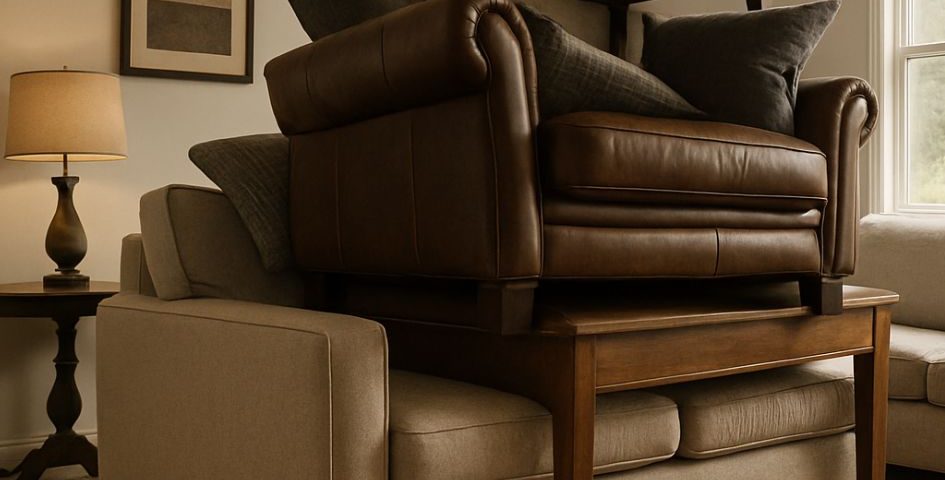
How to Protect Your Carpet from Heavy Furniture
You’ve invested in soft, beautiful carpet—but now you’re adding furniture and wondering: how do I keep heavy couches, beds, and tables from crushing or damaging it? Over time, furniture can cause dents, tears, or permanent flattening in your carpet. But don’t worry—there are simple, effective ways to prevent damage while keeping your space stylish and functional.
Why Heavy Furniture Damages Carpet
Carpet is made of fibers that bend under pressure. When heavy furniture sits in one spot for too long, the fibers get compressed and may not fully rebound. This leads to visible dents, worn areas, or permanent crushing. Some furniture can even snag or tear carpet backing if moved improperly.
Top Ways to Protect Carpet from Furniture Damage
1. Use Furniture Coasters or Pads
One of the easiest ways to prevent carpet dents is to place coasters or felt pads under your furniture legs. These small accessories distribute the weight more evenly and reduce pressure on the carpet fibers.
- Choose larger diameter coasters for extra-heavy items like beds or sectionals.
- Rubber or non-slip options can also keep furniture from shifting and bunching the carpet.
- You can find clear, low-profile designs that won’t clash with your decor.
2. Rearrange Furniture Occasionally
Even small adjustments can help relieve pressure on certain areas of the carpet. Rotate rugs, shift sofas, or swap accent chairs around every few months to keep wear even and minimize lasting indentations.
3. Use Rugs Under Furniture Legs
Placing area rugs or runners beneath furniture not only adds design interest—it also provides an added layer of protection. Rugs help absorb pressure and reduce direct contact with carpet fibers.
Check out our post on carpet vs. rugs to learn when layering makes the most sense for your space.
4. Choose Furniture with Wider Bases
When possible, select furniture pieces that have wide or flat bases. The more surface area in contact with the carpet, the less pressure is concentrated on a single point.
- Metal legs or thin wood feet are more likely to dent than broad platforms or box bases.
- Wide feet also reduce snagging or cutting risk when moving furniture.
5. Install Carpet with High-Density Padding
The right carpet padding helps prevent damage from below. High-density foam or memory foam pads provide better resistance against pressure and prolong the lifespan of your carpet. Ask your flooring installer about pad upgrades if you’re in the planning phase.
How to Fix Dents from Furniture in Carpet
Option 1: Ice Cube Trick
Place an ice cube in the dent and let it melt completely. The moisture will cause the fibers to swell back up. Once dry, gently fluff with a spoon or the edge of a credit card to raise the pile.
Option 2: Steam and Brush
Use a handheld steamer or a damp cloth with a hot iron (no direct contact) to warm the dented fibers. Then brush or rake them gently back into place. Be careful not to overheat or soak the carpet backing.
Option 3: Carpet Rake or Groomer
These tools are made specifically to lift and revive flattened fibers. Rake the affected area after vacuuming to restore appearance—especially helpful for high-pile or plush carpets.
Tips for Moving Furniture on Carpet
- Use sliders: Plastic or felt furniture sliders reduce friction and prevent snags when moving large items.
- Lift—don’t drag: Always lift heavy furniture slightly when shifting position, especially on soft or high-pile carpets.
- Wrap sharp corners: Use towels or foam wraps when moving to protect both carpet and walls.
Best Carpets for Homes with Heavy Furniture
1. Low-Pile Carpet
Tightly woven, low-pile carpets (like Berber or commercial loop styles) are more resistant to crushing and easier to maintain with furniture.
2. High-Density Carpet
Look for carpet options with higher density ratings. These provide more resilience under pressure and are less prone to permanent dents.
3. Stain-Resistant Fibers
If you’re moving furniture often or layering rugs, go with carpets made of nylon or triexta—both resist wear and are easy to clean.
Additional Protection for Homeowners and Renters
For Homeowners:
- Use high-quality carpet padding
- Invest in long-term coasters or furniture bases
- Consider rearranging rooms seasonally to distribute wear
For Renters:
- Use rugs under furniture to protect landlord-installed carpet
- Buy large felt pads or sliders—especially for couches and dining tables
- Fix any noticeable dents before moving out with ice cube or steam methods
Related Reading
Want to extend the life of your carpet? Read our 7 easy tips for keeping carpet looking new or explore our blog on
